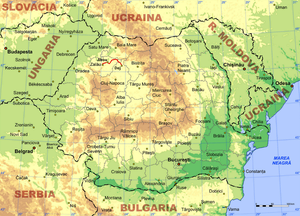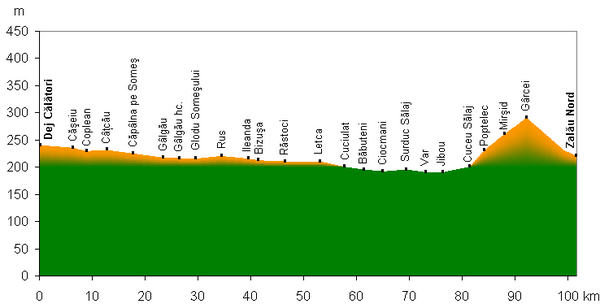Dej – Jibou – Zalau railway line
| Dej – Jibou – Zalau | |||||||||||||||||||||||||||||||||||||||||||||||||||||||||||||||||||||||||||||||||||||||||||||||||||||||||||||||||||||||||||||||||
|---|---|---|---|---|---|---|---|---|---|---|---|---|---|---|---|---|---|---|---|---|---|---|---|---|---|---|---|---|---|---|---|---|---|---|---|---|---|---|---|---|---|---|---|---|---|---|---|---|---|---|---|---|---|---|---|---|---|---|---|---|---|---|---|---|---|---|---|---|---|---|---|---|---|---|---|---|---|---|---|---|---|---|---|---|---|---|---|---|---|---|---|---|---|---|---|---|---|---|---|---|---|---|---|---|---|---|---|---|---|---|---|---|---|---|---|---|---|---|---|---|---|---|---|---|---|---|---|---|---|
| Course book route (CFR) : | 400, 412 | ||||||||||||||||||||||||||||||||||||||||||||||||||||||||||||||||||||||||||||||||||||||||||||||||||||||||||||||||||||||||||||||||
| Route length: | 101 km | ||||||||||||||||||||||||||||||||||||||||||||||||||||||||||||||||||||||||||||||||||||||||||||||||||||||||||||||||||||||||||||||||
| Gauge : | 1435 mm ( standard gauge ) | ||||||||||||||||||||||||||||||||||||||||||||||||||||||||||||||||||||||||||||||||||||||||||||||||||||||||||||||||||||||||||||||||
|
|||||||||||||||||||||||||||||||||||||||||||||||||||||||||||||||||||||||||||||||||||||||||||||||||||||||||||||||||||||||||||||||||
The Dej – Jibou – Zalau railway line is a main line in Romania . It runs mainly along the river Someș and connects the north of Transylvania with the Kreisch area .
history
The railway line was built at the end of the 19th century on the territory of Hungary within the Habsburg dual monarchy . In 1887 a line from Carei (Hungarian Nagykároly ) to Zalau (Hungarian Zilah ) was opened. The construction of the line discussed here established the connection from Zalău to the rail network of Northern Transylvania and created a new railway junction called Dej (Hungarian Dés ). The construction was carried out by a private company, the Szamosthalbahn. The line was opened in 1890.
After the First World War , the region came to Romania; the route was taken over by the Romanian state railway Căile Ferate Române . As a result of the Second Vienna Arbitration , the route was temporarily returned to Hungary from 1940 to 1944.
Todays situation
The line is not electrified and from Dej to Ileanda double track, then single track. The section from Dej to Jibou is part of the important long-distance connection from Brașov to Satu Mare ; Several express trains run here every day. The connection is also of great importance for freight traffic. The section from Jibou to Zalau is a little less frequented.
Individual evidence
- ^ Hermann Strach: History of the railways of the Austro-Hungarian monarchy. Verlag K. Prochaska 1898, p. 554

